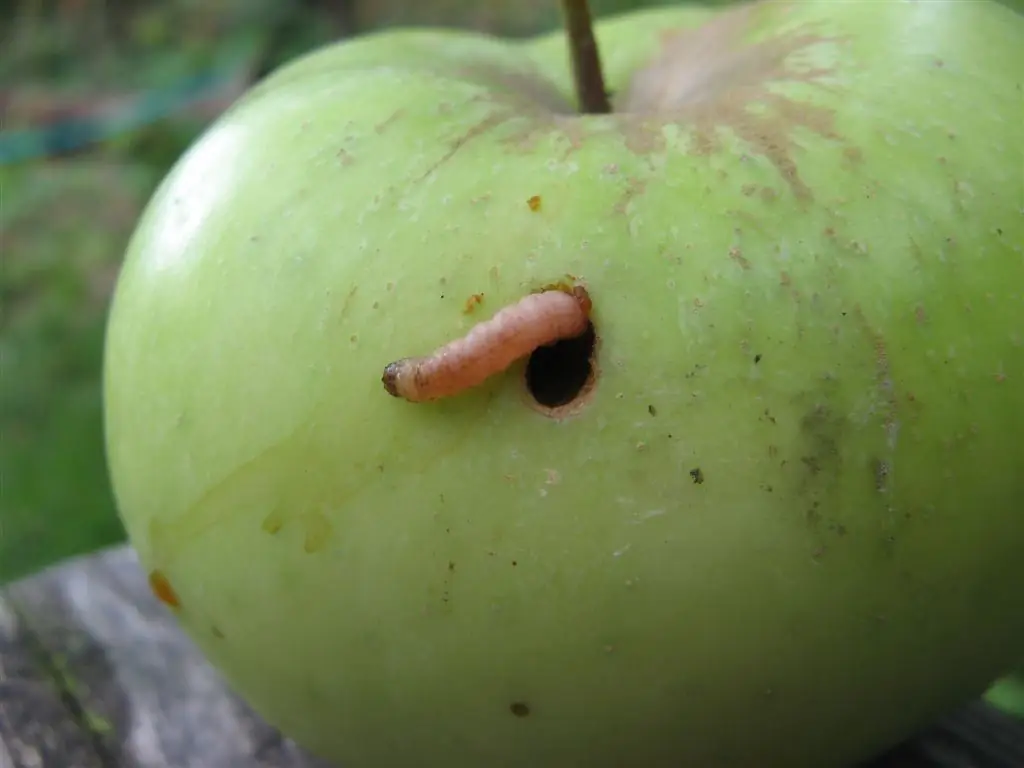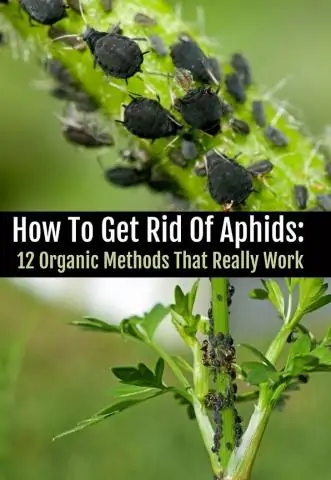
Table of contents:
- Author Bailey Albertson [email protected].
- Public 2023-12-17 12:53.
- Last modified 2025-01-23 12:41.
3 main pests of cucumbers and easy ways to deal with them

The reason for the decrease in the yield of cucumbers can be not only aggressive weather conditions and unsuitable soil, but also often the result of the activity of insects. To prevent this, it is useful to know the main pests of the garden and the methods of dealing with each of them.
Spider mite

This parasite is capable of causing irreparable damage to crops. Cucumbers are one of his favorite plants. He lives, as a rule, on the lower part of the bush. If you do not notice the presence of an insect in a timely manner and do not take measures, the tick can completely destroy the cucumber bed in a season.
The pest feeds on the juice of vegetable crops, which leads to the rapid death of plant cells. As a result, the bush loses its ability to develop and completely dies. In addition, the spider mite carries on itself the spores of pathogenic fungi, which infect ripening fruits.
The main symptoms of the appearance of a spider mite on cucumbers:
- silver-white cobwebs on the back of the leaf;
- the presence of black grains - insect excrement;
- discoloration or yellowing of the central part of the leaves;
- barely noticeable holes, as if made by a needle;
- with a strong defeat on the culture, you can see clusters of pale yellow larvae.
Having found these signs, you need to immediately sanitize the cucumber bushes and the surrounding area with plain water from a hose under strong pressure. It is important to remove all affected leaves, and treat the bushes with a solution of colloidal sulfur.
Apply by spray from a spray bottle, evenly covering both sides of leaves, stems and fruits. The couples drive the mites out of their webs and destroy them along with the remaining larvae.
And the last step is to disinfect the soil under the bushes. The land must be watered with a weak solution of manganese with the addition of a few drops of iodine, after which it is recommended to apply a small amount of manure fertilizer. This will prevent further mites from breeding.
Melon aphid

The melon aphid larvae are activated in early spring when the air temperature rises to 5 degrees. If there are strong temperature changes, the aphid dies. But this does not happen often and, as a rule, you have to fight the pest yourself.
Insects feed on plant cells of cucumber bushes. They can be seen on the lower leaves, shoots and flowers. As a result, plants lose their immunity.
The fight against melon aphids should be started by clearing the garden from weeds and last year's plant debris, since the pest waits out the winter just under the leaves of unharvested weeds. If insects are found at the initial stage of their reproduction, you can collect their clusters by hand using a sponge dipped in soapy water.
When the plant is completely affected, it will need careful processing - spraying with an ash solution with the addition of soap. For cooking, you need 1 full glass of ash and 10 liters of water. Insist the mixture for a day, then strain. Add 2 tablespoons to the solution. liquid soap or dishwashing detergent.
The resulting mixture should be thoroughly sprayed on the cucumber bushes from a spray bottle, especially on the back of the leaves and below - in the places of the main concentration of aphids.
In the fight against aphids, dandelion infusion shows itself well. It is also effective as a prophylactic agent for repelling many harmful insects from the garden.
To prepare it, you will need 300 g of dandelion leaves and roots, 2 tbsp. liquid soap and 10 liters of warm water. Leave the mixture for 3 hours and strain. You need to spray cucumbers daily until the pest is completely cleared.
Using potash and phosphorus fertilizers, you can significantly increase the immunity of the cucumber culture. This will give the vegetables the ability to independently resist the effects of aphids.
Sprout fly

The larvae of the sprout fly hibernate in dense cocoons in the soil, and by mid-spring they appear on the soil surface. By this time, the seeds of the cucumbers give the first shoots.
Pests penetrate into young shoots, impairing further development. Damaged seedlings get sick, are easily exposed to pathogens and die. If you do not take action at an early stage of crop growth, you can forget about a good harvest.
To prevent the appearance of sprout flies, you should adhere to important agrotechnical recommendations:
- after the autumn harvest, immediately clear the beds of all plant residues;
- Dig deeply in the soil in the fall, and also constantly loosen during the growing season. This will allow the insect larvae and eggs to be turned out of the ground. They perish under the sun's rays;
- when digging, manure fertilizer should be applied to the ground. In organic soil, the larvae of the sprout fly do not survive the winter;
- before planting seeds for seedlings, they must be disinfected;
- early cucumber varieties are much more likely to grow healthy until the germ fly larvae have reactivated after hibernation.
Recommended:
Control Measures For The Moth (apple, Plum, Etc.): Folk And Chemical Methods

Detailed descriptions of methods for controlling the apple and plum moth. Folk methods, recipes. Chemical treatment
Description And Rules For Growing Cucumber Varieties Amur F1 + Video

Features and description of the parthenocarpic variety Amur F1. How to properly grow cucumber seedlings, feed the plant and harvest. Reviews of gardeners
Everything About The Tchaikovsky F1 Cucumber Variety - Description, Planting, Care And Other Nuances

Cucumber variety Tchaikovsky F1: description of the hybrid, its advantages, cultivation technology, feeding, methods of combating the main pests and diseases
Cucumber Variety Ekol F1 - Description, Care And Other Features + Video

Cucumber variety Ekol F1 - a description of the features of care, cultivation, collection and storage of the crop
How To Get Rid Of Aphids In The Garden And In The Garden: Effective Methods Of Control

What is aphid, what does it look like and what it eats. Insect species. Control methods: folk remedies and insecticides. Pest prevention
